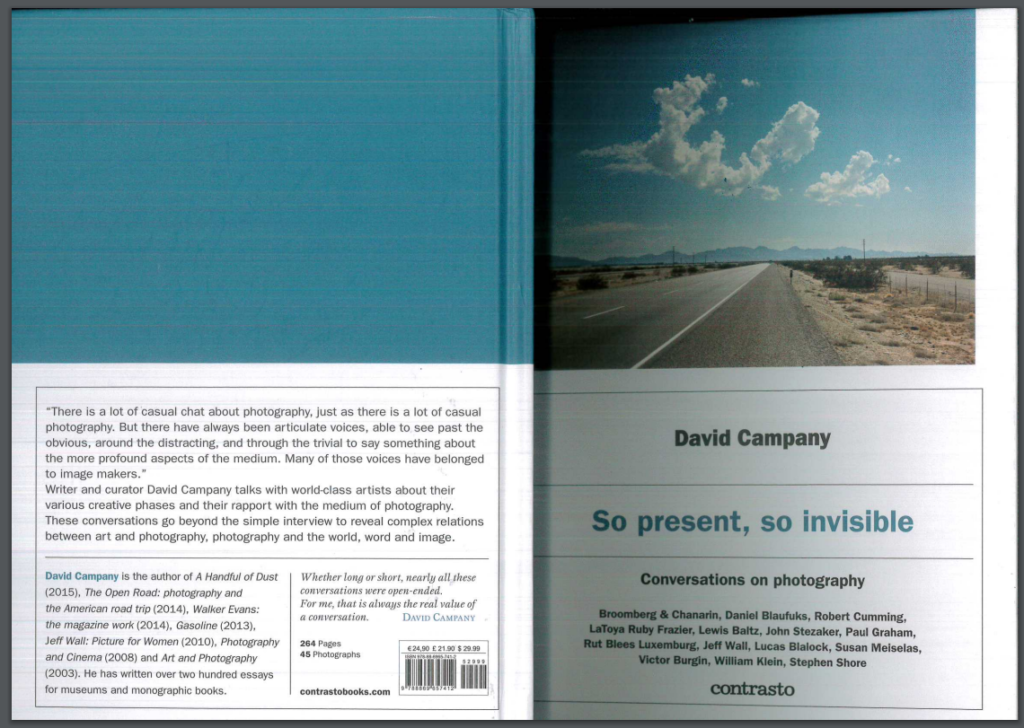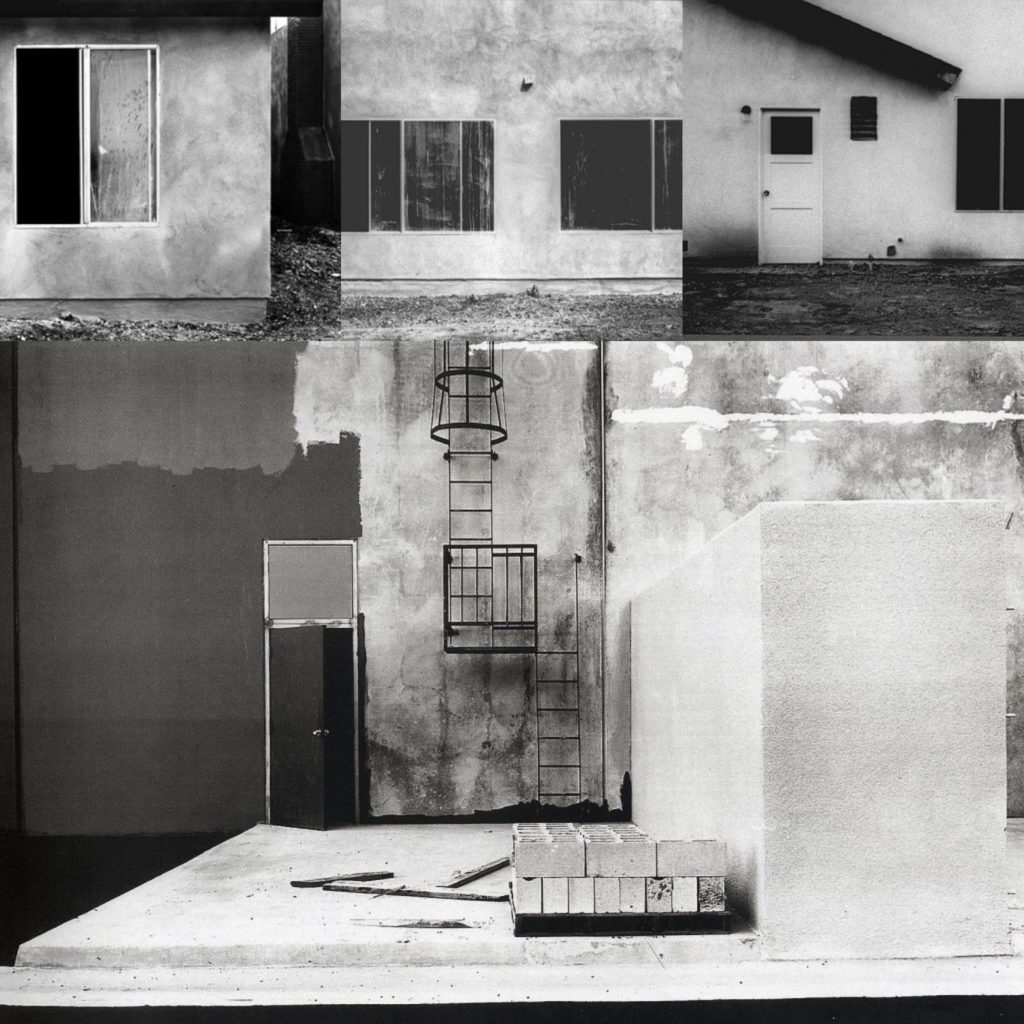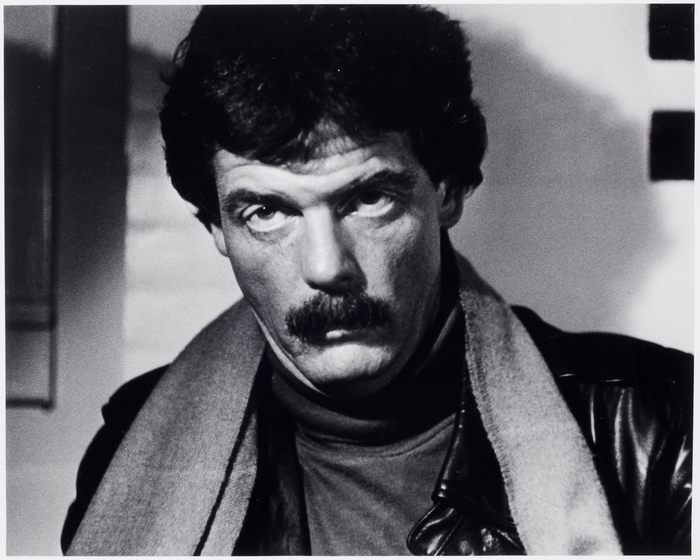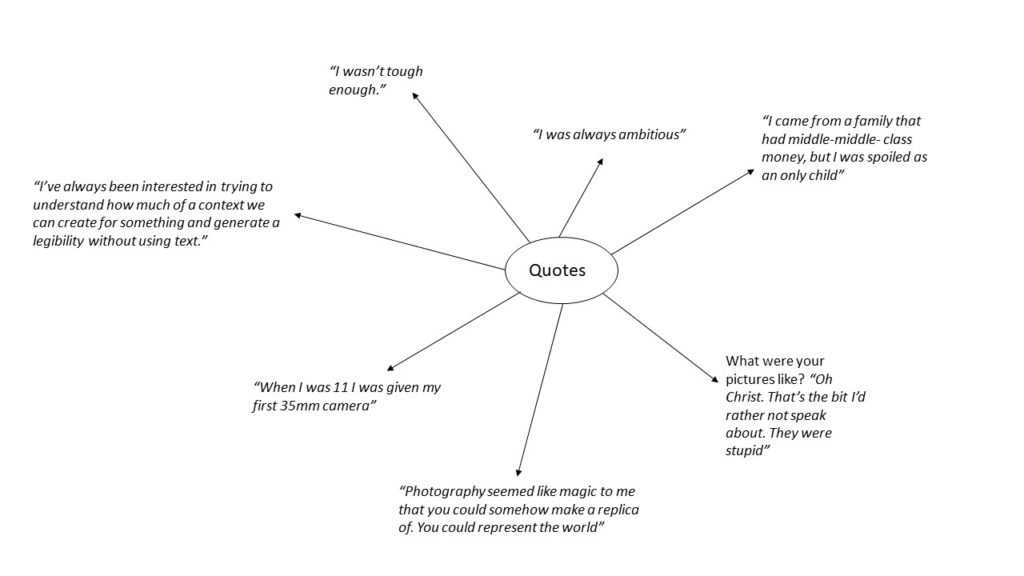David Campany’s New Book (Introduction)
Reading through the introduction of Camapany’s new book it is clear that the individual is knowledgeable and starts off his intro with his personal opinion on photography. He includes the quote“Photography is the easiest thing to talk about, which also makes it the hardest”. I found that this allowed for the book to be introduced in a personal way which can also be taken as facts. He also includes four names within this which are said to be photographers who have inspired him to talk to them about photography, making this introduction also conversational. He said that the conversations were challenging and there were photographers who seemed to be “more approachable than others“.
Going onto the end of the first page and onto the second, Campany again gives a personal experience where he says he is usually invited by artists and photographers to interview them which he says he likes to take casually in order to not but the person on the spot (after personal experience). He usually doesn’t prepare to interrogate the individuals and makes up the questions on the spot as “the best moments come when both parties are really pushing and clarifying each others thinking” . The carry on from this is about conversations within his workplace and explains the value of a conversations along with the waste of a questionnaire.
After this introduction there is then a sections for each photographer included in the book which totals to fourteen of them.
Front and Back of the Book

Contents Page (Photographers listed)

David Campany’s Introduction Page

Looking into an Artist
After looking at David’s introduction page, i then went through and chose an individual from the contents page to explore in more detail.
Lewis Baltz Artist Research
Baltz was born in Newport Beach, California in 1945 and was known for his work focused around the subject of beauty in desolation and destruction. He graduated with a BFA in Fine Arts in 1969 as well as held a Masters Degree from Claremont Graduate School. Due to this he received several scholarships and awards as his specialty was recognized by lots of industries best. In the year 2002, he became a professor in Photography for a graduate school.
Coming back to the subject around his independent work ‘ Beauty in Desolation and Destruction’ his images were seen to describe the architecture of the human landscape ie offices and parking lots. His images are a clear representation of representing power and control through his minimalistic photographs. He has said that what inspired him most to create these subjects is the difference between knowledge and visual aspect as his photographs, videos and site-specific installations dramatize these aspects in different ways. In 1989 he left back for Paris and Venice where he lived the remaining years of his life.
Mood Board of his Images
His Style..
- Black and white edits
- Contrast between light and shade
- Fully focused images
- Images of industrial sites
- Shapes of buildings are usually seen
- High shutter speed/ Low ISO used
- Images aren’t cropped
Quotes
Image Analysis

Technical Analysis- Technically we can see that this image has been taken with a well quality camera and simple setting have been used in order to make the image successful. I am thinking that a quick shutter speed along with no depth of field would have been used for this image as it is a fully focused image, it is also suggested that there was no flash used for this image. There would have been a low ISO used as the shutter speed was high for no intended blur. The apature is likely to b on F16 to allow the full frame to be in focus and allow enough light in the image.
Visual Analysis- Visually we can see this image has been edited into a black and white edit which allows for contrast to be shown clearly through light and shade, as well as the image being seen as being part of a building which looks run down. There are also a lot of walls in the image as well.
Conceptual Analysis- Conceptually, this image as seen as quite a light and shade image creating a sense that it has a dark meaning behind it. Due to the odd locations of a shoot this also adds the element that Baltz may have been in a dark place in his mind.
Contextual Analysis- Contextually this image was taken at Western Carpet Mills in Tustin and is from ‘The New Industrial Parks Near Irvine, California’ in 1974.



